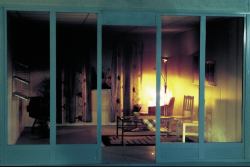Fire safety design in buildings
 The main purpose of fire safety design of a building is to minimise the consequences of a fire by:
The main purpose of fire safety design of a building is to minimise the consequences of a fire by:
-
preventing injury to people
-
limiting the material and economic damage
In a burning building there is often a high risk of personal injury. To safely evaquate a building during a fire you need to consider:
-
fire gases
-
visibility
-
heat radiation
-
temperature
E.g. in order to evacuate safely, the air temperature in rooms through which people are escaping should not exceed approx. 80°C.
The total fire protection of a building
The total fire protection of a building and its specific function is a complex issue, concerning several areas and how they interact with one another:
-
The building itself including its design, building elements, materials, interior fittings and furnishing
-
The fire detection systems and alarms
-
The organisation and practice of conducting evacuation
-
The rescue efforts of fire brigades
-
The extinguishing and control of the fire. Partly through automatic fire extinguishing systems and/or partly through active actions, e.g. of the fire brigade
Building regulations and various types of standards normally cover these aspects. The building regulations are formulated on a national basis and vary between different countries. Standards can be on either a national base (e.g. DIN, BS and ASTM) or international (EN- and ISO-standards).
